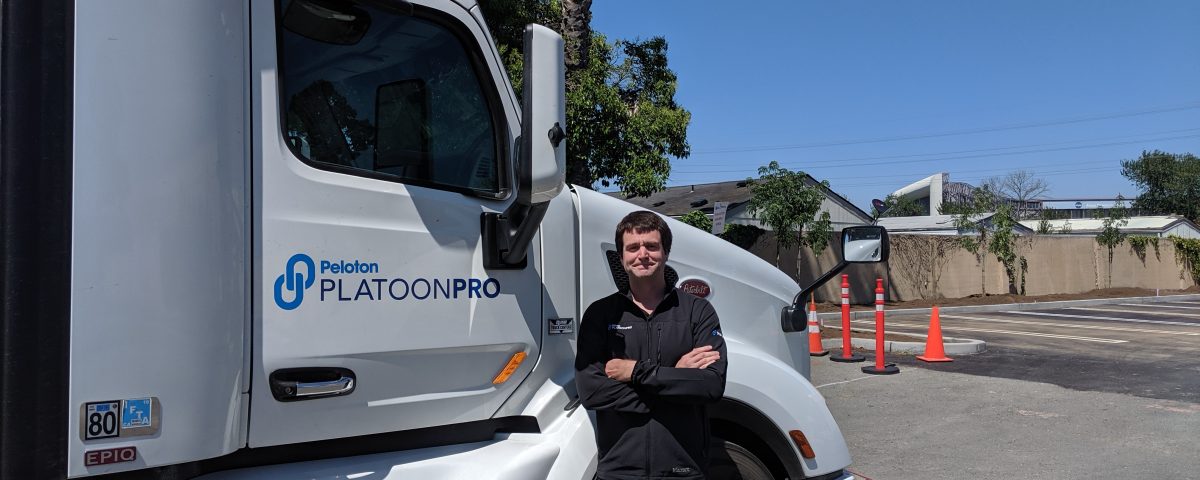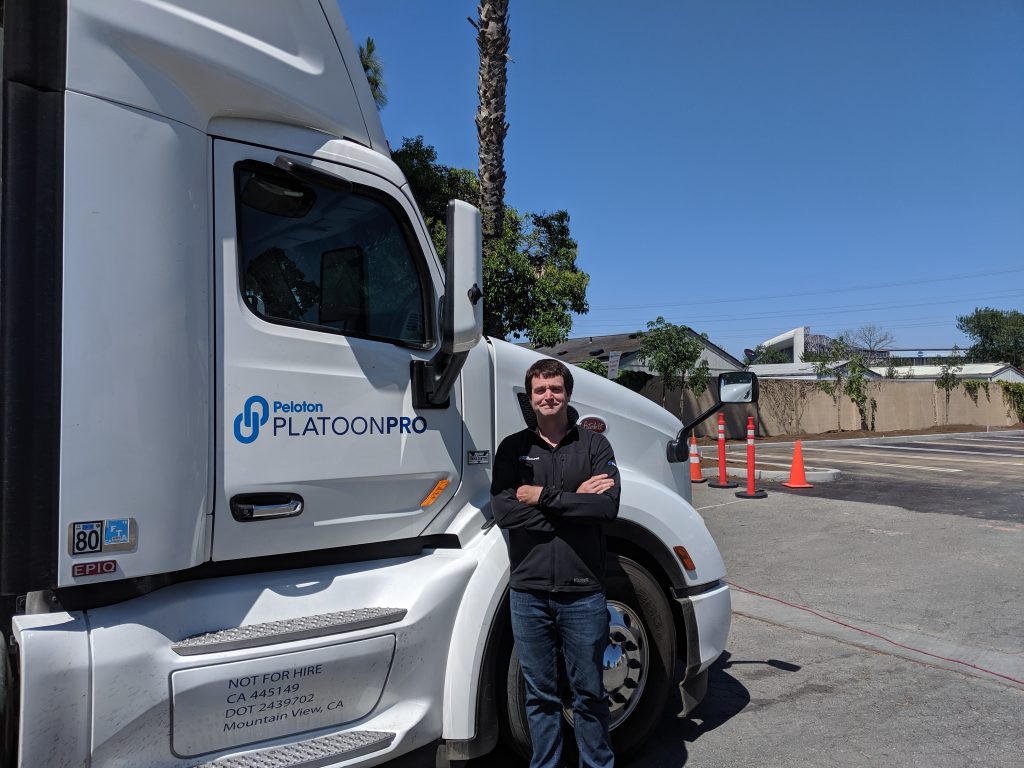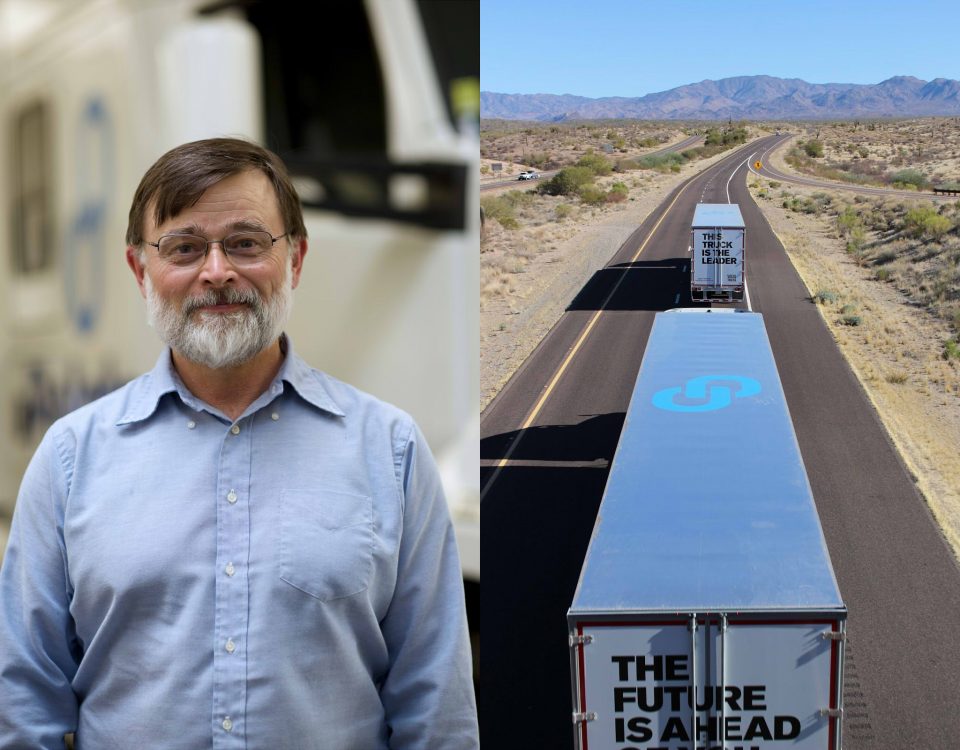
BP Low Carbon Accreditation Program Validates Peloton’s Fuel Economy Advances
May 3, 2019
Fleet Drivers Trained to Platoon on Highway in One Day
June 7, 2019From the Race Track to the Test Track: Making Truck Platooning Safer


If you want to make driving as safe as possible, sometimes it helps to start with the most extreme case: professional race car drivers.
For my Ph.D. thesis, I investigated how some of the best human drivers operate at the limits of friction, and applied what I learned to make automated vehicles safer. At Peloton, I incorporate that same pursuit of safety into our truck platooning technology.
Safety is the highest priority for everything we do at Peloton. As they say in racing, to finish first, first you have to finish. For platooning trucks, to save fuel, first we have to make it safe. My job is to make sure our PlatoonPro system is ready for whatever it may encounter out on the road.
One important realization I had during my research was just how safe modern vehicles are – the past decade has seen historic lows for both the total number of traffic fatalities and the fatality rate per 100 million vehicle-miles traveled in the United States. Advanced driver assistance features, such as Anti-Lock Braking Systems (ABS) and Electronic Stability Control (ESC), have helped set a high bar for safety standards. Highly automated systems must overcome significant technical challenges to match the level of safety experienced on today’s roads.
Peloton strives to exceed those standards in a number of ways. We start by adopting guidelines from the international standard for functional safety in road vehicles: ISO 26262. This series of standards provides a structured framework for the design, development, and validation of electronic systems in production automobiles. The PlatoonPro system incorporates vehicle-to-vehicle communication to ensure the safety of the follow vehicle while drafting. The follow truck in a platooning pair can react within a fraction of a second to anything experienced by the lead truck, including a full emergency braking situation. The Peloton system seamlessly integrates with existing electronic control units for the brakes, engine, and radar to both leverage and enhance the full range of safety systems that are installed on trucks today.
With each version of our technology, we embark on rigorous testing of platooning trucks, including brake tests at the limits of friction. Beginning on closed courses, we put platooning-certified, professional truck drivers and their vehicles through the paces, testing not only basic system functionality, but also the system’s response to extreme scenarios.
In my position, I design, implement, and test features such as fault detection, fault handling, and system control when in a degraded state. We analyze the results of the tests along with thousands of on-road miles to enhance our software and make sure it’s meeting all our high-level safety goals.
Recently, Peloton released a safety report with details of how we achieve outstanding levels of functional safety for platooning trucks.
Peloton’s platooning system relies on professional drivers and their skills. But platooning drivers find that the automated functionality provided by Peloton not only offers the obvious benefits of improved fuel economy, it also makes driving safer.
My research focused on learning from highly skilled drivers to make automated vehicles safer. At Peloton, I apply that same passion to bring a driver-focused, safety-first product to the road.



